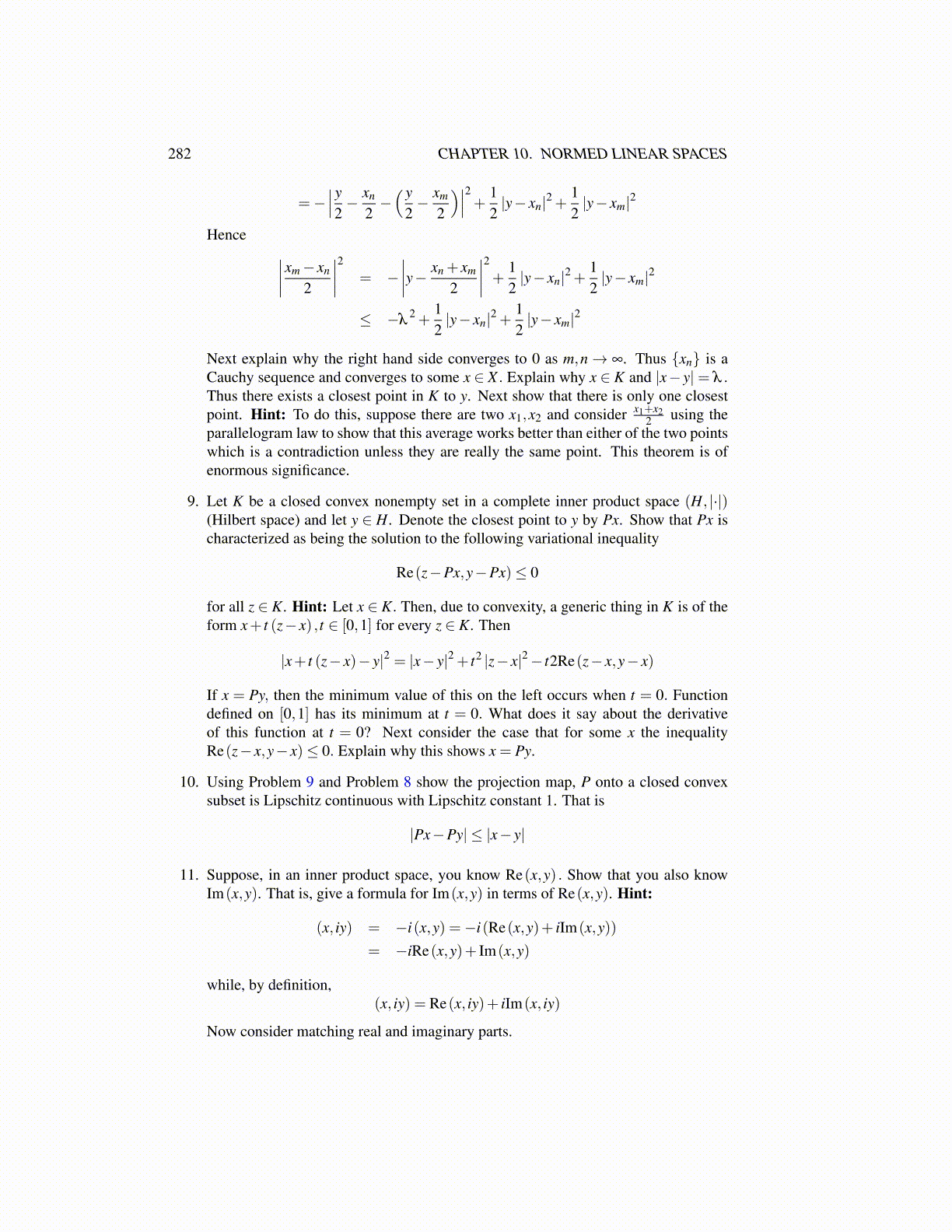
282 CHAPTER 10. NORMED LINEAR SPACES
=−∣∣∣ y2− xn
2−( y
2− xm
2
)∣∣∣2 + 12|y− xn|2 +
12|y− xm|2
Hence ∣∣∣∣xm− xn
2
∣∣∣∣2 = −∣∣∣∣y− xn + xm
2
∣∣∣∣2 + 12|y− xn|2 +
12|y− xm|2
≤ −λ2 +
12|y− xn|2 +
12|y− xm|2
Next explain why the right hand side converges to 0 as m,n→ ∞. Thus {xn} is aCauchy sequence and converges to some x ∈ X . Explain why x ∈ K and |x− y|= λ .Thus there exists a closest point in K to y. Next show that there is only one closestpoint. Hint: To do this, suppose there are two x1,x2 and consider x1+x2
2 using theparallelogram law to show that this average works better than either of the two pointswhich is a contradiction unless they are really the same point. This theorem is ofenormous significance.
9. Let K be a closed convex nonempty set in a complete inner product space (H, |·|)(Hilbert space) and let y ∈ H. Denote the closest point to y by Px. Show that Px ischaracterized as being the solution to the following variational inequality
Re(z−Px,y−Px)≤ 0
for all z ∈ K. Hint: Let x ∈ K. Then, due to convexity, a generic thing in K is of theform x+ t (z− x) , t ∈ [0,1] for every z ∈ K. Then
|x+ t (z− x)− y|2 = |x− y|2 + t2 |z− x|2− t2Re(z− x,y− x)
If x = Py, then the minimum value of this on the left occurs when t = 0. Functiondefined on [0,1] has its minimum at t = 0. What does it say about the derivativeof this function at t = 0? Next consider the case that for some x the inequalityRe(z− x,y− x)≤ 0. Explain why this shows x = Py.
10. Using Problem 9 and Problem 8 show the projection map, P onto a closed convexsubset is Lipschitz continuous with Lipschitz constant 1. That is
|Px−Py| ≤ |x− y|
11. Suppose, in an inner product space, you know Re(x,y) . Show that you also knowIm(x,y). That is, give a formula for Im(x,y) in terms of Re(x,y). Hint:
(x, iy) = −i(x,y) =−i(Re(x,y)+ iIm(x,y))
= −iRe(x,y)+ Im(x,y)
while, by definition,(x, iy) = Re(x, iy)+ iIm(x, iy)
Now consider matching real and imaginary parts.